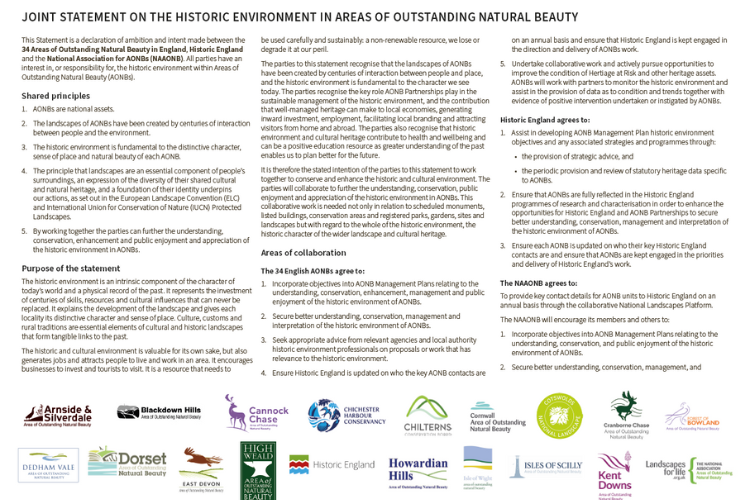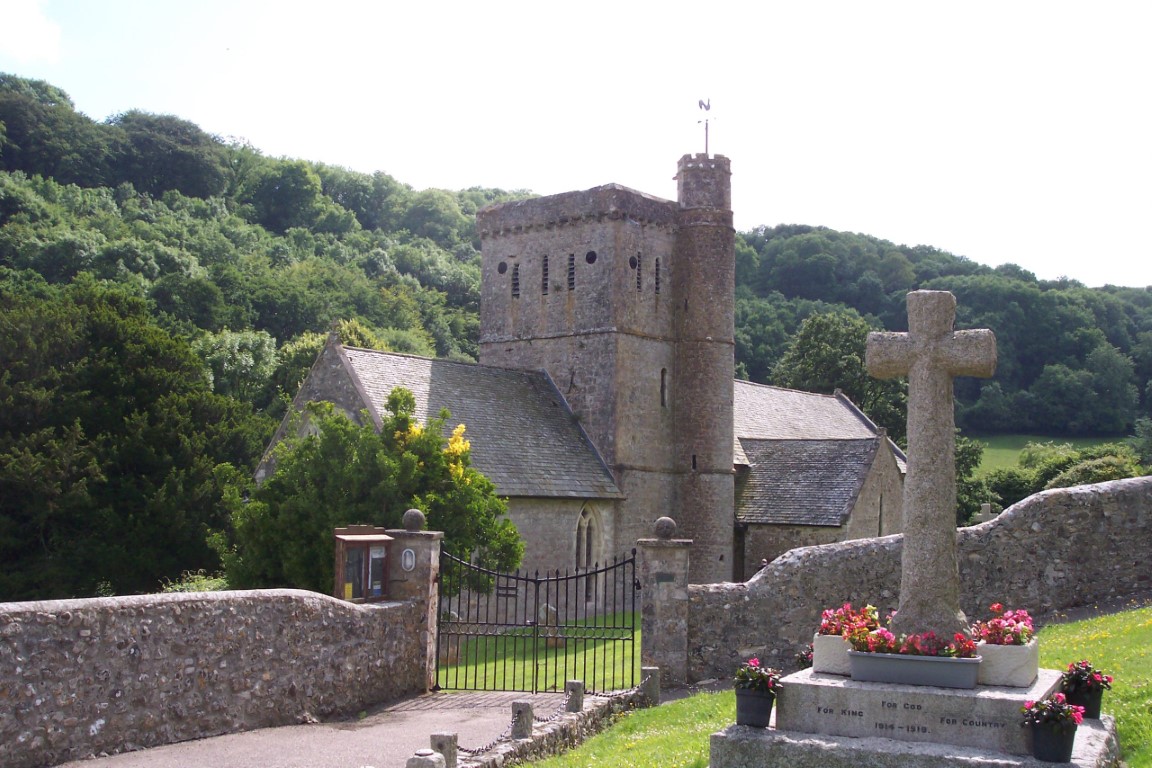England’s Areas of Outstanding Natural Beauty and Historic England have today signed a joint statement outlining their ambition and intent to work together to conserve and enhance the historic and cultural environment of England’s 34 National Landscape.
Areas of Outstanding Natural Beauty (National Landscape) are protected by the nation for everyone in recognition of their unique characteristics.
National Landscape cover 16% of the land area of England and include such iconic places as Fountains Abbey, Willie Lott’s Farm (as seen in Constable’s Haywain) and many of the tin mines of Cornwall. While these familiar historic sites are recognisable examples of England’s distinctive heritage, there is much more that goes into making a place. This joint statement is a commitment to preserving and celebrating the heritage of England’s most distinctive places.
We often think of landscape as a pretty view, but rich layers of history underpin what we see. Centuries of interaction between people and place influence local nature, industry, culture and language; together these particular combinations of factors create unique and special places.
National Landscape are living and working landscapes and the joint statement also represents a commitment to those communities. Caring for their exceptional heritage does not mean preserving these places ‘in aspic’. Archaeology shows us how these landscapes have changed through history. Further evolution is inevitable as populations shift, our climate changes and agriculture responds to global pressures. Well-managed heritage has a beneficial effect on local communities, boosting the local economy, providing employment and attracting visitors from home and abroad.
Philip Hygate, Chair of the National Association for Areas of Outstanding Natural Beauty said:
“I am delighted that we can make this joint statement alongside our colleagues at Historic England today. A visit to an National Landscape is a wonderful experience, an opportunity to see a real, working landscape with modern day relevance wearing its history on its sleeve. These places have been shaped by human endeavour, with waves of people joining communities to shape and contribute to their development for centuries. From the lime kilns of Arnside and Silverdale National Landscape to the thatched roofs of the Cotwolds, these places are distinctive and special, and it is our duty to conserve and celebrate them for generations to come.”
Duncan Wilson, Chief Executive for Historic England said: “England’s National Landscapes contain more than 49,000 listed buildings, over 4,600 nationally important ancient monuments and 300 designated historic parks and gardens. Our National Landscapes are steeped in history and tell important
stories about how people have shaped some of our most beautiful landscapes over centuries. This Joint Statement for the Historic Environment will help with the management and understanding of these exceptional places so they can continue to evolve whilst the characteristics which make them special can be looked after for the future.”
Patrick Norris, Chair, Northumberland Coast National Landscape Partnership, hosting the signing, said:
“This comprehensive statement will play a significant role in the conservation of our shared historic environment, exemplified by the landscapes of our 34 Areas of Outstanding Natural Beauty. The statement allows for an inclusive and a diverse approach to our shared historic environment. It will encourage all communities to explore and discover precious historical assets in the National Landscape network and beyond. It places the historic environment fully alongside scenic and landscape quality, natural and cultural heritage, relative wildness and tranquillity in National Landscapes.”

